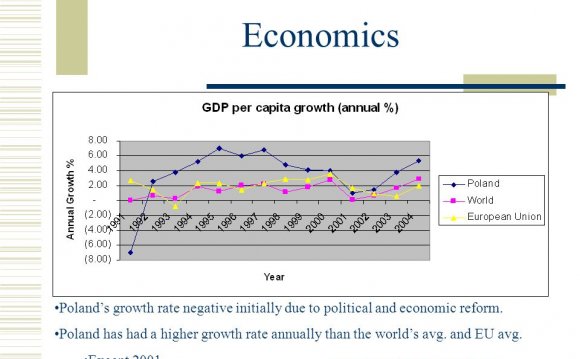
 This last point is of particular importance when understanding Poland’s on-going growth. Government expenditures continued to increase in Poland throughout the crisis, rising from €15.1billion in 2008 to €16.5billion in the first quarter of 2012. One of the most important actions of the government was to increase public investment, through utilising available EU funds. Poland was the single largest recipient of EU funds from the 2007-13 budget, as it was liable to receive up to €67billion in structural and cohesion funds. This helped the government to instigate large investments in the country’s infrastructure, particularly in preparation for the Euro2012 football championships. As a share of overall investment, public investment increased from 35 per cent to 43 per cent between 2005 and 2010 and as a share of GDP from 4.2 per cent to 5.7 per cent from 2007 to 2011. The biggest increase in investment has been in the area of buildings and infrastructure, which increased from €1.8billion in 2005 to €3.1billion in 2010.
This last point is of particular importance when understanding Poland’s on-going growth. Government expenditures continued to increase in Poland throughout the crisis, rising from €15.1billion in 2008 to €16.5billion in the first quarter of 2012. One of the most important actions of the government was to increase public investment, through utilising available EU funds. Poland was the single largest recipient of EU funds from the 2007-13 budget, as it was liable to receive up to €67billion in structural and cohesion funds. This helped the government to instigate large investments in the country’s infrastructure, particularly in preparation for the Euro2012 football championships. As a share of overall investment, public investment increased from 35 per cent to 43 per cent between 2005 and 2010 and as a share of GDP from 4.2 per cent to 5.7 per cent from 2007 to 2011. The biggest increase in investment has been in the area of buildings and infrastructure, which increased from €1.8billion in 2005 to €3.1billion in 2010.
Despite Poland’s comparatively impressive growth throughout the period of the economic crisis, this began to significantly slow in 2012. After expanding by more than 4 per cent in the fourth quarter of 2011, GDP growth dropped to 1.1 per cent in the fourth quarter of 2012 and then to just 0.5 per cent in the first quarter of 2013.
This slowdown in economic growth has been driven primarily by a decrease in the rate of investment. After peaking at 10 per cent growth in the fourth quarter of 2011, the rate of investment began to decline and from the third quarter of 2012 it has fallen for three successive quarters. This sharp fall in the rate of investment has primarily been due to a decline in public investment, as the large construction projects connected to preparations for the Euro2012 football championships have come to an end. Public investment as a share of GDP fell from 5.6 per cent in 2011 to 4.6 per cent in 2012.
Another important contributory factor to Poland’s slowdown has been the drop in personal consumption. The rate of increase in personal consumption slowed steadily throughout 2011 and 2012, before actually falling in the fourth quarter of last year. The labour market situation is worsening, with unemployment rising above 14 per cent in 2013, and real salaries being 1.4 per cent below the level they had been a year earlier. This is the first time that real salaries have declined in Poland since the early 1990s.









